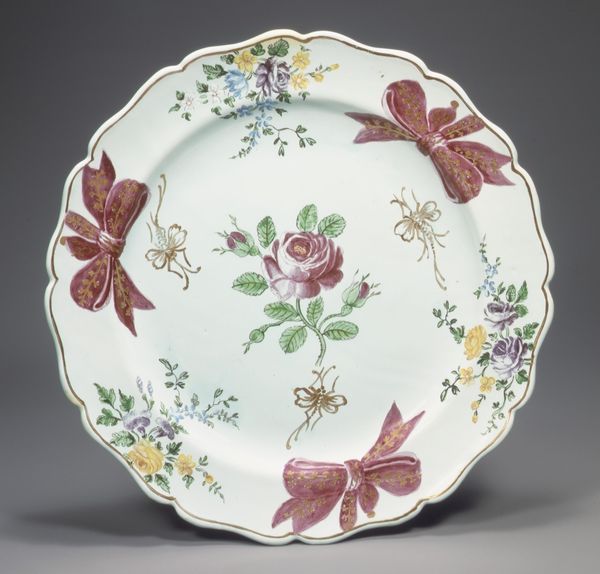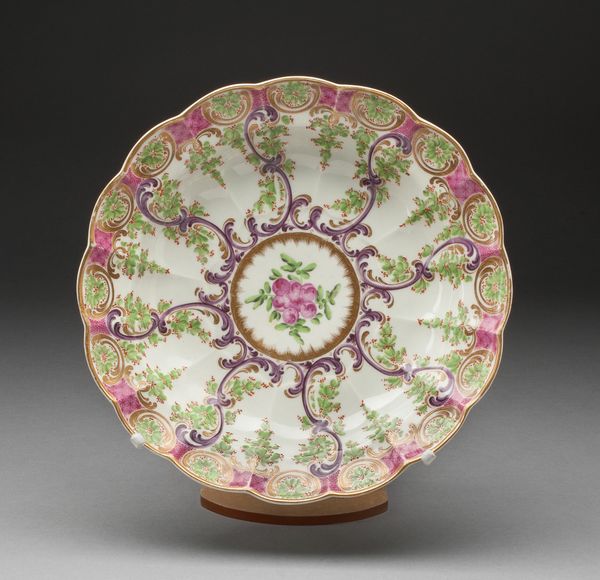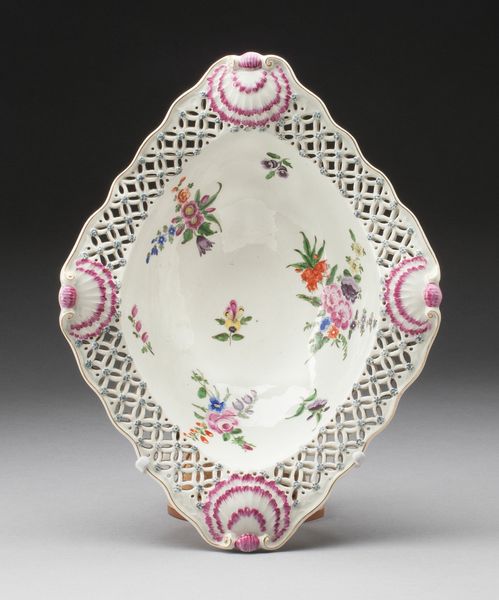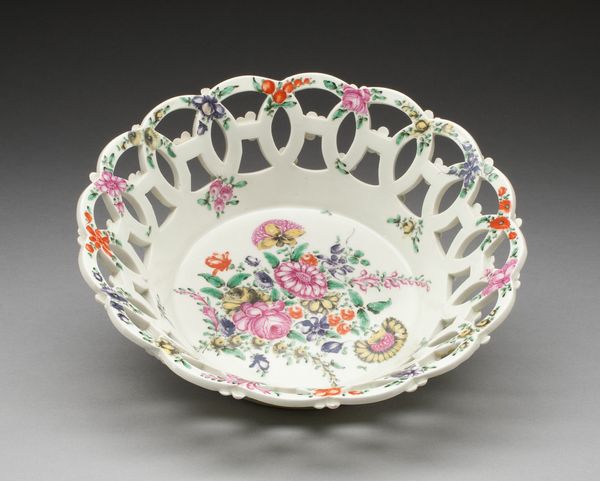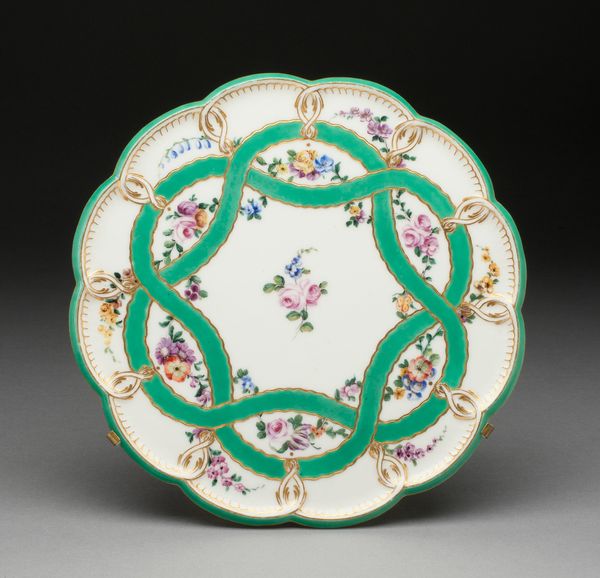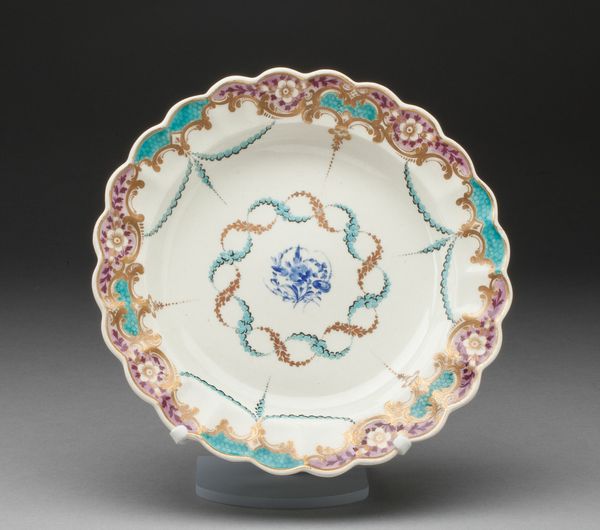
ceramic, porcelain
#
ceramic
#
porcelain
#
ceramic
#
decorative-art
Dimensions: H. 2.9 cm (1 1/8 in.); diam. 24.8 cm (9 3/4 in.)
Copyright: Public Domain
Curator: At the Art Institute of Chicago, we have an exquisite example of mid-18th century decorative arts: a porcelain plate produced around 1755 by the Chelsea Factory. Editor: It's lovely! I’m immediately struck by its delicacy. The porcelain seems so thin, almost translucent. And the hand-painted floral design is very charming. Curator: Absolutely. The Chelsea Factory was renowned for its innovative use of materials and techniques. Soft-paste porcelain was their hallmark – easier to fire, resulting in these beautifully thin-walled pieces. Editor: What strikes me, from a social history point of view, is that this wasn’t merely functional, it was about displaying status and refinement. It speaks volumes about 18th century British aspirations. Curator: Indeed. And consider the labour involved! From sourcing raw materials to shaping, firing, and painstakingly hand-painting each plate... Editor: You're right, the creation of this plate required coordinated skilled artisans working within an emergent industrial system, which completely revolutionized how tableware was made and accessed. Curator: Precisely. And the aesthetic itself is a product of its time, a blending of European Rococo with Chinoiserie influences. Notice the stylized plum blossoms and bamboo? Editor: All incredibly fashionable then. These objects are key historical artifacts, illustrating a shifting landscape of social status. The factory itself was an institution embedded in British political economy and cultural life, right? Curator: Exactly. And the way these porcelains were consumed played a crucial role in shaping notions of taste and luxury. It is just a simple Plate, yet it illustrates the dynamic relations between the rising capitalist elites in mid 18th century England. Editor: Well, I must say that it provides us a wonderful peek into the aesthetic preferences and social structures of the time. I never thought so much context could be read from a single plate. Curator: And I appreciate how focusing on production and skill informs our understanding of the plate’s value – much more than purely decorative.
Comments
No comments
Be the first to comment and join the conversation on the ultimate creative platform.


